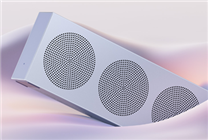Summary:
- Intel has confirmed the architecture of its upcoming Nova Lake and Diamond Rapids processors.
- Nova Lake will feature Coyote Cove P cores and Arctic Wolf E cores, while Diamond Rapids will utilize the Panther Cove P core.
- These processors are expected to launch in the second half of 2026, promising significant performance improvements.
Intel Confirms Architecture of Next-Generation Processors: Nova Lake and Diamond Rapids
Intel has officially released details regarding its future processor architectures, as outlined in the 59th Edition of the ISA Extended Reference Manual. The upcoming Nova Lake client processors and Diamond Rapids server processors are positioned to redefine performance benchmarks in the computing world.
Processor Architecture Overview
The Nova Lake architecture will integrate the Coyote Cove P core and Arctic Wolf E core. These advanced cores are set to replace the existing Cougar Cove P and Darkmont E cores found in the current Panther Lake processors. The changes promise to deliver significant enhancements in both performance and energy efficiency.
Central to Intel’s future plans, Nova Lake will launch in the latter half of 2026, encompassing both desktop and mobile variants. The architecture has already garnered significant attention due to numerous leaks over the last several months. Intel’s official confirmation of these core specifications solidifies its commitment to enhancing user experience across various platforms.
Nova Lake Processor Specifications
The Nova Lake processor family is expected to support a staggering 52 cores in desktop configurations, while the mobile-focused Nova Lake HX series will offer up to 28 cores. Additionally, the new chips will feature next-generation graphics modules based on the Xe3 architecture, enhancing visual performance and efficiency. Desktop versions will also introduce the innovative LGA 1954 interface, further optimizing connectivity and expandability for users.
Diamond Rapids: The Server Powerhouse
In the server domain, Intel is gearing up for the release of its Diamond Rapids processors, which will feature the Panther Cove P core architecture. This new architecture will provide a slight enhancement over the Cougar Cove P cores, promising to improve computational efficiency for data center environments.
The Diamond Rapids processors are anticipated to support an impressive 256 cores and are also scheduled for launch in the second half of 2026. Notably, these processors will not support hyperthreading (SMT) upon release, but Intel plans to reintegrate this functionality in subsequent releases, branded as Coral Rapids.
Competitive Landscape
As both Intel’s Nova Lake and Diamond Rapids processors prepare to enter the market, they will face formidable competition. The Nova Lake line is set to compete with AMD’s Zen 6 "Ryzen" series, while Diamond Rapids will take on the EPYC server processors, which are also based on the Zen 6 architecture. This sets the stage for an intense showdown between two of the foremost CPU manufacturers.
The implications of these advancements in both client and server technologies cannot be overstated. With improvements in core architecture, performance metrics, and energy efficiency, both Nova Lake and Diamond Rapids are poised to significantly impact the market landscape, catering to a wide array of computing needs.
Conclusion
Intel’s announcement marks a pivotal moment in the evolution of its processor technology. With the strategic enhancements brought forth in Nova Lake and Diamond Rapids, Intel is positioning itself to reclaim market share and redefine user experiences in desktop and server environments. As the launch dates approach, the industry will keenly observe how these technological advancements translate into real-world performance.
By continuously evolving its core architectures, Intel remains committed to pushing the boundaries of what is possible in computing, setting the stage for future innovations.









